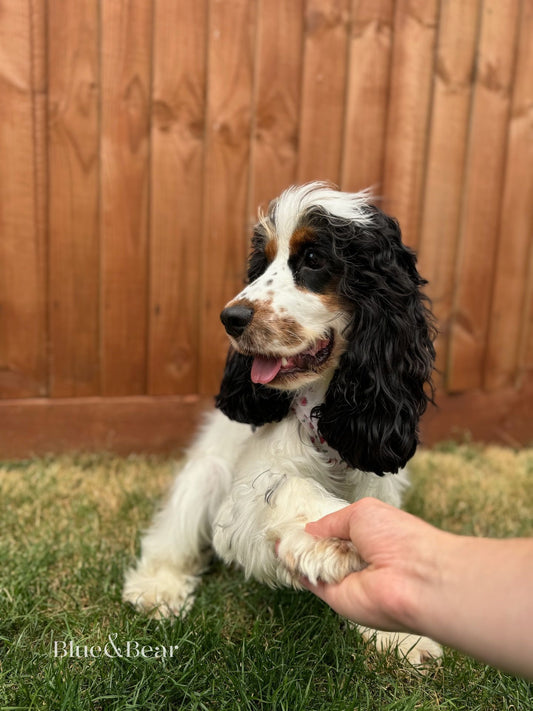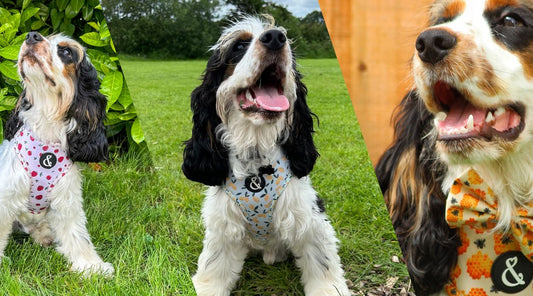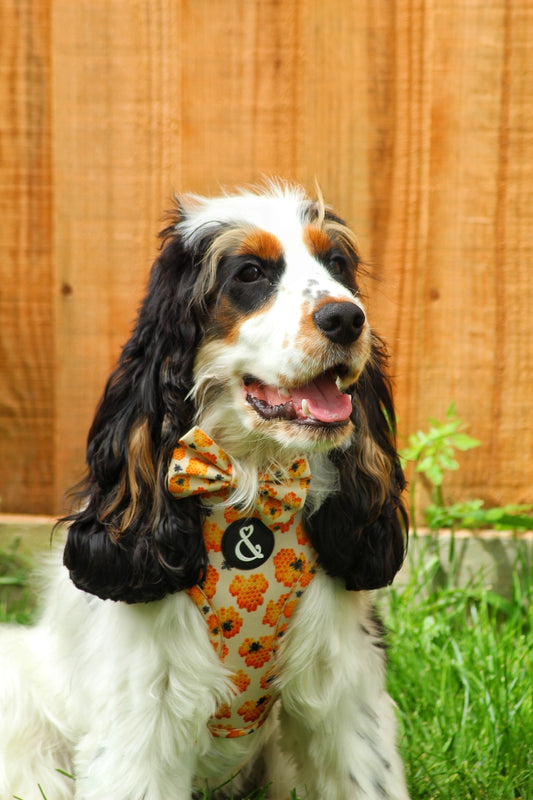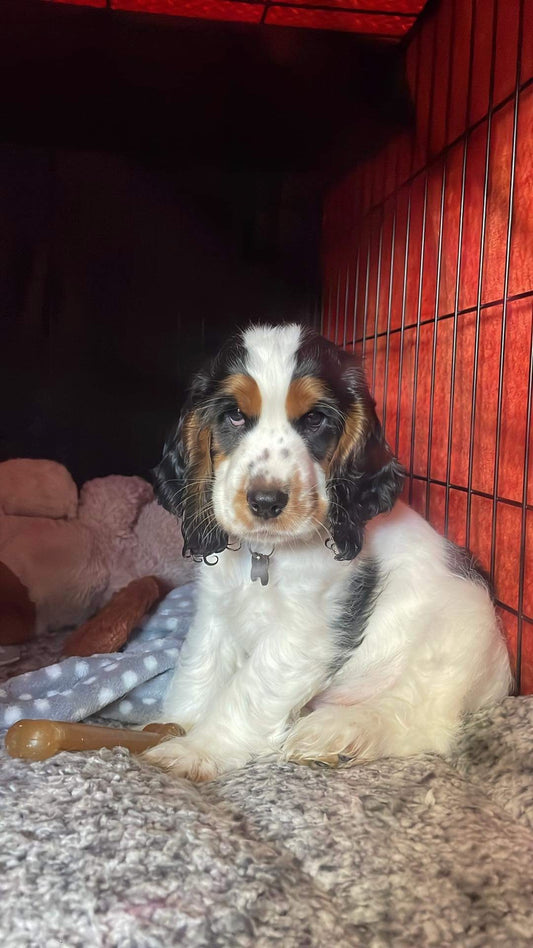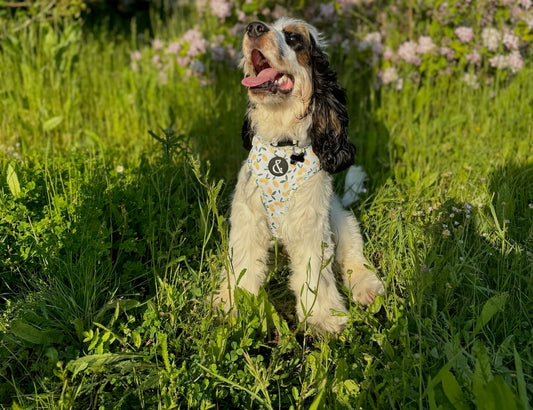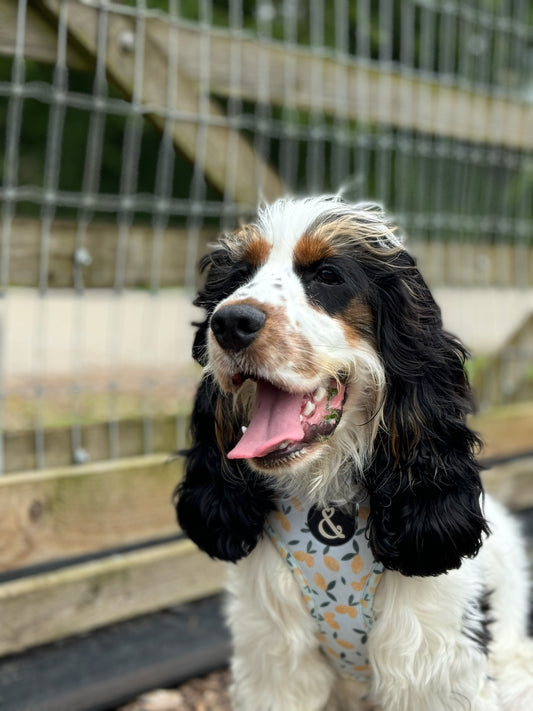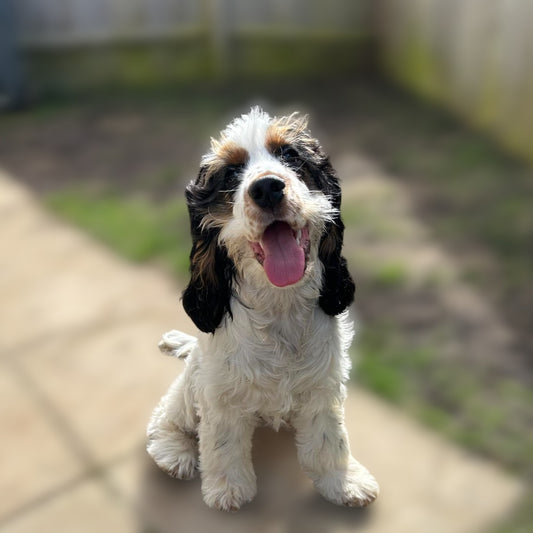
How to Teach a Dog to Give Paw: A Step-by-Step Guide
Teaching your dog to give paw is not only a fun trick but also a great way to bond with your pup! This simple command can provide mental stimulation, improve obedience, and even have practical uses in everyday situations. With patience and a few simple steps, you can easily teach your dog this delightful trick.
Key Takeaways
-
Teaching 'give paw' strengthens the bond between you and your dog.
-
The command provides mental stimulation and boosts your dog's confidence.
-
The only tools you need are a high value reward such as tasty treats, or your dogs favourite toy, and patience.
-
Consistency and a distraction-free environment are key to successful training.
-
Advanced tricks like 'high five' and 'wave' can build on the 'give paw' command.
Why Teaching 'Give Paw' is Beneficial
Many people think that tricks like teaching your dog to sit, or teaching a dog to lay down are the most beneficial, but you'll find that teaching your dog to give paw isn't just a cute trick to show off. Some of the ways you may find it useful each day include putting your dogs harness over their legs and inspecting their paws for any skin issues. Your dog knowing this command makes this process much simpler for the both of you!
Essential Tools for Training
Training your dog to give paw is a fun and rewarding experience, and you only need a few simple tools to get started!
Choosing the Right Treats
Treats are a great way to motivate your dog during training. It's important to choose the right kind of treats to keep your dog interested. High-value treats are usually the best option. These are treats that your dog finds irresistible, like small pieces of chicken or cheese. You can also try a 'puppy buffet' taste test to see which treats your dog prefers. If your dog is more play orientated, you may find that their favourite toy is a greater reward for them, rather than treats.
Maintaining Patience
Training a dog takes time and patience. It's important to stay calm and positive, even if your dog doesn't get it right away. Remember, every dog learns at their own pace. Keep training sessions short and fun to avoid overwhelming your dog. If your dog seems tired or stressed, take a break and try again later. Creating a comfortable environment for your dog can also help them stay focused and engaged during training sessions.
Optional: Using a Clicker
A clicker is a small device that makes a clicking sound when pressed. It's used to mark the exact moment your dog performs the desired behaviour. This helps your dog understand what you want them to do. To use a clicker, simply click and reward your dog with a treat when they perform the correct action. Over time, your dog will associate the click with a reward and will be more likely to repeat the behaviour. We'll have a guide on this later on!
Preparing Your Dog for Training
Before you start teaching your dog to give paw, it's important to set the stage for success. Proper preparation can make the training process smoother and more enjoyable for both you and your furry friend. Here are some key steps to get your dog ready for training.
Creating a Distraction-Free Zone
Pick a training area where your dog can focus without interruptions. Inside your home, create a distraction-free zone by turning off the TV, keeping other pets and people out of the area, and removing any distracting toys. If you have an enclosed yard, you can also train outside with fewer distractions.
Getting Your Dog to Sit
Before you can teach your dog to give paw, they should know how to sit. This is a basic command that forms the foundation for more advanced tricks. If your dog doesn't already know how to sit, spend some time teaching this command first. Use treats and positive reinforcement to encourage your dog to sit on command. It may also be beneficial for your dog to be fully aware of their name, in case they get distracted or loose attention!
Using a Consistent Command
Consistency is key in dog training. Choose a simple, clear command for giving paw, like "Paw" or "Shake." Use this command every time you practise the trick. Consistent practice helps your dog understand what you expect from them. Pair the command with a hand signal to make it even easier for your dog to learn.
Good preparation is the key to teaching your dog new skills in a fun and effective way. Plan short but frequent training sessions, and always be patient and positive, remember that mental exercises such as learning new commands is tiring for dogs, and especially for puppies!
Step-by-Step Training Process
Getting Your Dog’s Attention
Start by ensuring your dog is focused on you. Call their name or show them a treat to grab their attention. It's best to do this in a quiet environment where there are no distractions.
Luring with a Treat
Hold a treat in your closed hand in front of your dog's nose. Most dogs will try to get the treat by using their paw. Wait patiently until your dog lifts their paw to touch your hand. As soon as they do, open your hand and give them the treat.
You may also find it useful to lightly tap on one of your dogs paws to get them to move it, rewarding any small movements is important at the start, as your dog won't yet have an idea of what action you'd like to reward!
Adding a Verbal Cue
Once your dog starts to understand the action, introduce a verbal cue like “Paw” or “Shake.” Say the cue just before your dog lifts their paw. Over time, they will associate the word with the action.
Practising Regularly
Consistency is key. Practise this trick several times a day for short periods, around 5-10 minutes each session. Regular practice helps your dog learn faster and keeps the training fun and effective.
Remember, patience and positive reinforcement are essential. Every dog learns at their own pace, so keep the sessions light and enjoyable.
Common Struggles Teaching A Dog to Sit
Dealing with Distractions
Training your dog to give paw can be tricky if there are too many distractions around. Create a quiet space where your dog can focus. If your dog gets distracted, gently bring their attention back to you with a treat or a toy.
Handling Lack of Interest
Sometimes, your dog might not seem interested in learning this new trick. If this is the case, try using high-quality treats, new types of food or their favourite toy to make the training more exciting. If you've been feeding your dog a lot of their high value treat, they may get used to it, and you'll need to find something even tastier for them!
Adjusting Your Approach
If your dog is struggling, it might be time to change your approach. Be patient and try different methods, like using a clicker or changing the type of reward. Remember, every dog learns at their own pace, so stay positive and keep trying.
Combining Commands
For a real challenge, try combining multiple commands. For example, you can ask your dog to 'sit', then 'give paw'. Also try spacing out these request to make sure they don't instinctively give you their paw when they sit, as this isn't what we want to reward. This not only keeps your dog engaged but also helps them learn to follow a series of instructions.
Wrapping It Up
Teaching your dog to give paw is not just a fun trick, but also a great way to bond with your furry friend. Remember, patience and consistency are key. Keep the training sessions short and sweet, and always end on a positive note. With time and practise, your dog will be offering their paw like a pro. So grab some treats, get comfy, and enjoy this special time with your dog. Happy training!
Frequently Asked Questions
Why should I teach my dog to give paw?
Teaching your dog to give paw helps strengthen your bond, provides mental stimulation, and can be practical for putting on a dog harness, for grooming, or vet visits.
What treats should I use for training my dog?
Choose small, tasty treats that your dog loves. Avoid crumbly treats as they can be distracting.
How long does it take to teach a dog to give paw?
The time it takes can vary, but with regular short training sessions, most dogs can learn this trick in a matter of days.
What if my dog isn’t interested in learning to give paw?
Try using different treats or training in a quieter environment. Patience and consistency are key.
Can I use a clicker for training?
Yes, using a clicker can help mark the exact moment your dog performs the desired action, making it easier for them to understand what you want.
What are some other tricks I can teach after 'give paw'?
Make sure your dog has mastered other basic tricks like learning their name, and knowing how to sit on command. Once your dog has mastered 'give paw', you can teach them 'high five', 'wave', or even combine commands for more complex tricks!



